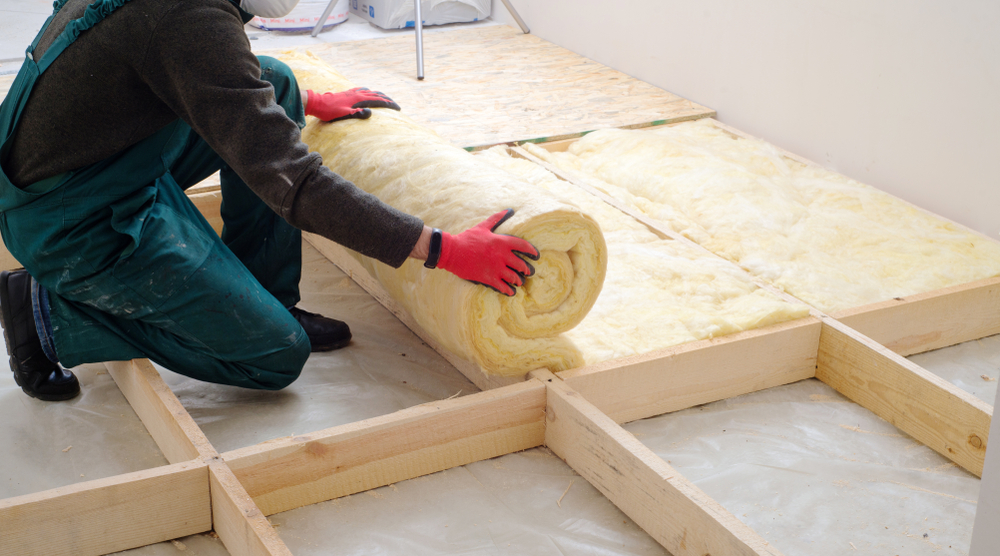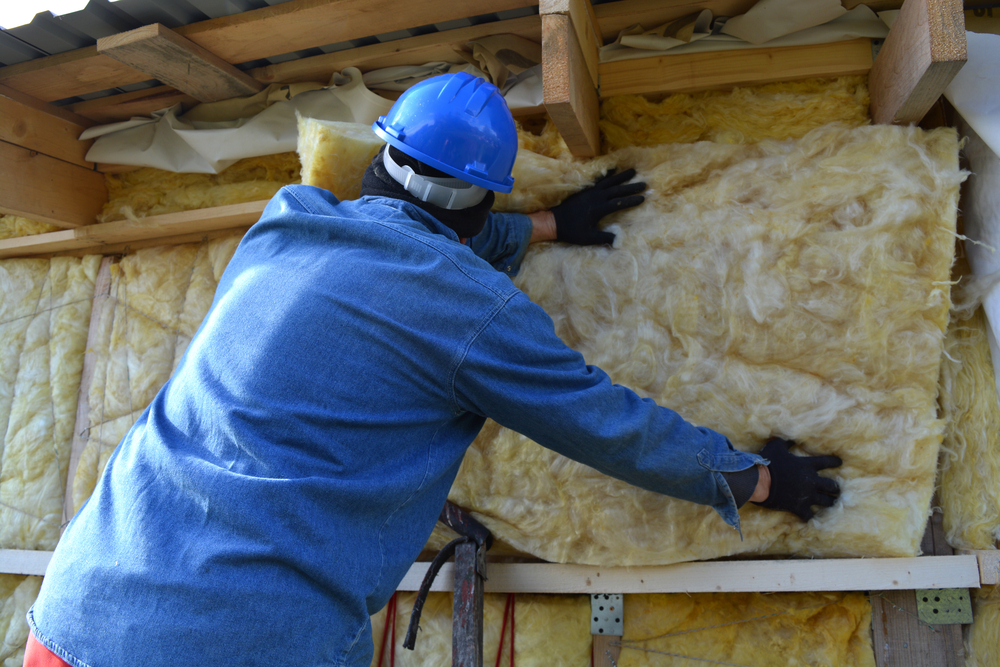Interior Wall Insulation: Should You Insulate Your Home Walls?

Tired of braving the cold season by throwing on a warm sweater and a pair of socks? It may be time to consider insulating your interior walls. Your home should be a haven of warmth and comfort—even if it’s an old, drafty building—and a bit of interior wall insulation goes a long way. Not only does insulating your home walls keep heat in, but it also increases your home’s energy-efficiency among many other attractive benefits.
As simple a task as installing insulation may initially appear, it takes a team of experienced professionals or well-seasoned DIY-ers to start and finish the job. There are plenty of nitty-gritty details to work out before diving in, and that’s why we’re here to provide the answers to all of your burning questions about interior wall insulation.
How does insulation work?
Insulation’s main purpose is to slow the transfer of heat between the interior and exterior of your home. Serving as a thermal-resistant barrier between the two climate spheres, effective insulation blocks heat from migrating inside during the summer and retains heat during the winter. In essence, insulation helps increase the energy efficiency of your home.
There are several different types of insulation materials that all deliver the same end result, however, each material accommodates a different R-value (the measure of thermal resistance). The higher the R-value, the greater the insulation’s performance.
How do I know if I need interior insulation?
There are a few telltale signs that serve as clear indicators of whether or not your home needs interior insulation. However, it’s equally important to first check to see if your walls are already insulated. Taking a trip up to your attic is the easiest way to answer your question—all you’ll have to do is locate the attic access panel and check if there is any exposed insulation lining the frames.
Removing your home’s electrical box and accessing the interior is another easy way to confirm whether or not your home is already insulated. While this method takes a bit of hacking into your walls, the existing electrical box hole makes it fairly easy to make minor incisions, remove, and check. In some cases, you may even be able to simply unscrew the faceplate and remove the box without any extra wall dissection.
In the event that your home is not insulated, all you’ll need to survey to decide whether or not you need interior wall insulation is how hot or cold your home feels. If you’re experiencing a lot of heat loss during the winter or AC loss in the summer, it’s likely time to pursue that home insulation project.
How do I evaluate existing insulation?
Let’s say that you checked to see if your home had insulation and you found that it does—it’s just incredibly ineffective insulation. This is not uncommon among older homes, so don’t fret, simply evaluate. Ultimately, you want your home to function at peak efficiency, and if your existing insulation isn’t doing the job, it’s well worth your while to understand why before diving into a project.
There are a few key questions that you should aim to answer at the end of your insulation evaluation:
- Is your attic well ventilated?
- Is your existing insulation damp, molding, or compressed?
- Is there any air leakage between your living space and attic?
- Is your existing insulation properly installed?

What are the benefits of insulation?
There are several immediate and long-term benefits of insulating your walls. In addition to increasing overall efficiency performance, interior wall insulation also protects your plumbing and electrical systems and investment in your home. Among the many benefits include:
- Reduced energy costs
- Improved moisture control
- Enhanced process performance
- Added fire protection
- Increased sound quality
- Added sound dampening
- Maximized return on investment (ROI)
What kind of interior wall insulation should I use?
Loose-fill: Loose-fill is the most common type of insulation used to retrofit old houses with more efficient insulation performance. Not only is loose-fill incredibly easy to install in hard-to-reach areas, but it’s also the mildest choice for finicky existing finishes.
The National Park Service recommends opting for loose-fill made from recycled newspaper that has been treated only with borates rather than ammonium or aluminum sulfate as the latter two create harmful sulfuric acid when mixed with moisture.
- Made of eco-friendly materials— cellulose and fiberglass which are both made of recycled goods
- Can be blown or sprayed into place with professional equipment
- Great for filling small wall cavities
- Can be applied over existing insulation
Batts & Rolls: When you think of traditional interior wall insulation, your mind likely conjures up images of plush batts and rolls. These pre-cut sheets or rolls of fiberglass insulation are the best option for insulating cavities between wood frames.
- Supremely designed for easy installation and handling between structural framings, studs, and joists.
- Available either with or without paper or aluminum foil facing.
- Can be used in floors, walls, attics, and ceilings.
Foam board: Foam board insulation is constructed by rigid foam panels that come in a standard-size of 4-foot by 8-foot sheets. Foam board is an excellent alternative to traditional fiberglass batt insulation as it has a higher R-value per inch of thickness, giving you stronger overall insulation performance.
- Typically made of polystyrene, polyisocyanurate, or polyurethane
- Moisture-resistant
- Can be used to insulate nearly any part of your home
Spray board: This two-part liquid insulation material insulates and seals wherever it is sprayed, filling gaps, cracks, and crevices with a no-frills application process. Spray board foam maintains its shape over time so you never have to worry about any gradual degradation, compression, or sagging down the road.
- Made of latex or polyurethane
- Great for filling small gaps and cracks (around doors, vents, windows, etc.)
- Quick, easy application that sets rapidly
- Can be painted, stained, and trimmed per your aesthetic preference
Where should I add insulation to my home?
In order to achieve the highest levels of energy efficiency in your home, you’ll need to be strategic about your insulation project. According to the U. S. Department of Energy, there are five primary areas of the home that should be insulated to yield the highest performance results; the attic, walls, floors, crawl spaces, and basement.
- The attic: Heat rises, and the attic is the highest point in your house, making it the perfect candidate for eventual water damage and erosion caused by excess heat and moisture. This structural deterioration can cause the shingles on your roof to decay, crumble, or swell.
- The walls: Both exterior and interior walls are the next most important areas to insulate in your home. Regardless of the type of insulation you choose to outfit your walls with, all good insulation will serve as a blanket-like barrier between the indoors and the outdoors. Restricting the flow of heat into and out of the home will allow you to stay warm (or cool) when it matters most.
- The floors: Warm and cool air can easily escape your home through the floor without a proper layer of insulation preventing that costly excess airflow. Foam board insulation is a popular option for floor insulation jobs.
- The crawl space: Crawl spaces are the areas underneath and throughout your home that allow easy access to plumbing and electrical systems. Sealing these spaces with fiberglass, foam, or cellulose insulation can help reduce energy costs and preserve healthy air quality levels inside of your home.
- The basement: Insulating your basement keeps it warm in the winter and cool in the summer while controlling the inevitable moisture buildup you’d expect from any basement setup.
There is plenty to consider when surveying whether or not you should insulate your home walls, and this guide should help you make the best decision for your house. With comfort and energy-efficiency as your two guiding forces, you’ll be perfectly prepared to make the best judgment.




